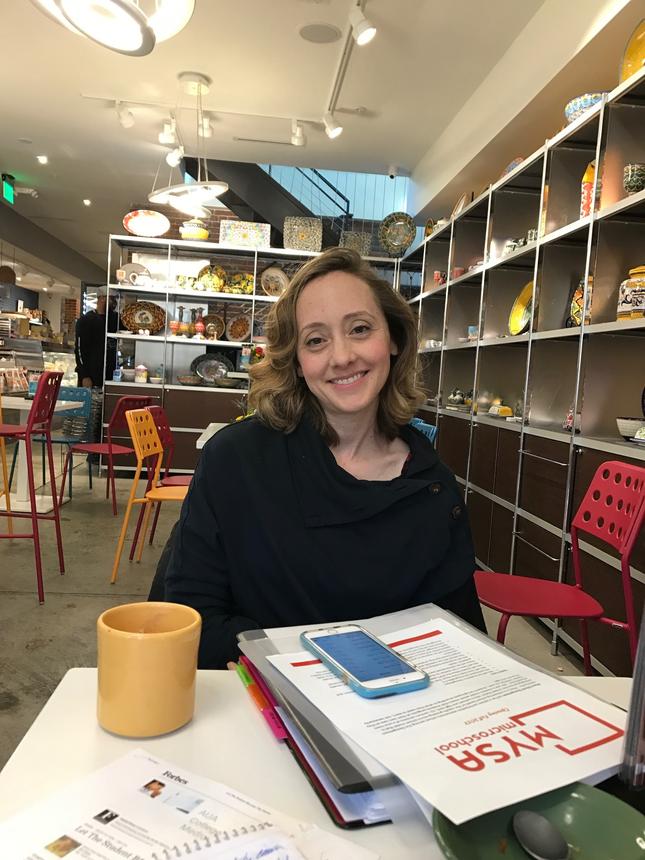“Do you remember at the big meeting last fall when the Hyde-Addison parents met with Mayor Muriel Bowser to object to busing our children for over an hour to a substitute school the next two years while our school is being renovated?” asked Elissa Alben, the mother of three Hyde-Addison Public Elementary School students, aged 4, 7 and 9.
“The mayor told us we had only two options. One, busing the some-300 students ages 4 to 9 for over an hour each day across town to a school in another zone that needs renovation itself. Or two, wait a year and have the children bused to D.C. University, where the city will fix up space for them. The mayor told us parents, ‘You let me know which one you decide.’”
Alben took a sip of coffee at Via Umbria last Saturday and shook her head. “Well, we did decide. One hundred and eighty-nine parents sent her a letter within three weeks stating we wanted to wait a year while space at UDC was renovated, and have our kids bused there instead of across town. Councilman Jack Evans was sent a copy. But we never heard a word back from anyone. Not a word.”
That’s when a group of parents at Georgetown’s only elementary school started looking for space themselves. “One parent went to every empty building in Georgetown,” Alben said. “Others of us started looking at alternative schools. We’ve been meeting weekly since December to look over options. Now we’ve found the one we all really like.”
It’s called the Mysa School system, ‘mysa’ being the Swedish word for ‘to cozy up.’ “It’s one of the new micro, place-based-education schools that are popping up throughout the country,” Alben explained. Mysa has just opened a school in Bethesda, described as a one-room schoolhouse for grades 6 to 12. Now they are willing to open an elementary school in Georgetown.
Limited to about 50 students, the school would be dependent on parent participation, community resources and technology to offer a customized and diverse curriculum that fits the needs of the particular school’s community as well as District standards. Tuition is expected to be less than two-thirds that of most area private schools: around $20,000 instead of $35,000 or more.
“The professional student-teacher ratio would be about 10 to one,” Alben said. “It will be a real community school with a real community presence. There would be an emphasis on math, science and reading in all contexts.” She continued: “And while there would be testing, of course, there will not be nearly as much as the D.C. schools now require.”
While Alben is excited about the chance for her children to go to a truly customized alternative school, she says she and all the parents are very disappointed that there were no other public school choices in the area. Ironically, Georgetown has no public charter schools — unlike other parts of the District, which has been characterized as “the queen of charter schools.”
Even more ironic is that the mayor recently made “walkability” to a public school — charter or regular — a priority in the District. In Georgetown, as of next year, there is no walkable choice; there is no public school option at all.
“Both my husband and I are total products of public schools when we grew up,” Alben said. “We expected and wanted our children to go to a neighborhood public school as well. But now there isn’t one (despite the high property taxes of Georgetown).”
Would they look toward this alternative school becoming a public charter?
“It takes years to get a charter school approved and is very complicated,” Alben said, flipping through a big binder of regulations. “Our priority right now is to have a Mysa School open as a 501(c)(3) nonprofit with 50 committed students next fall, with financial support including grants and scholarships from a number of sources. Then we’ll see about making it a public school charter. At this point, we feel this will not be a temporary, nor the only, alternative K-to-5th-grade option for the families and children of our area.”


